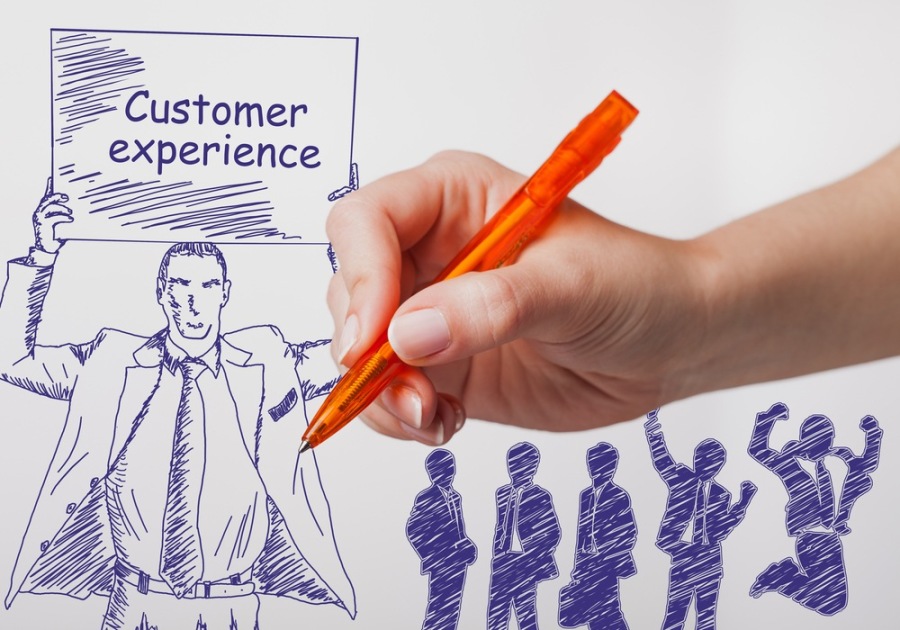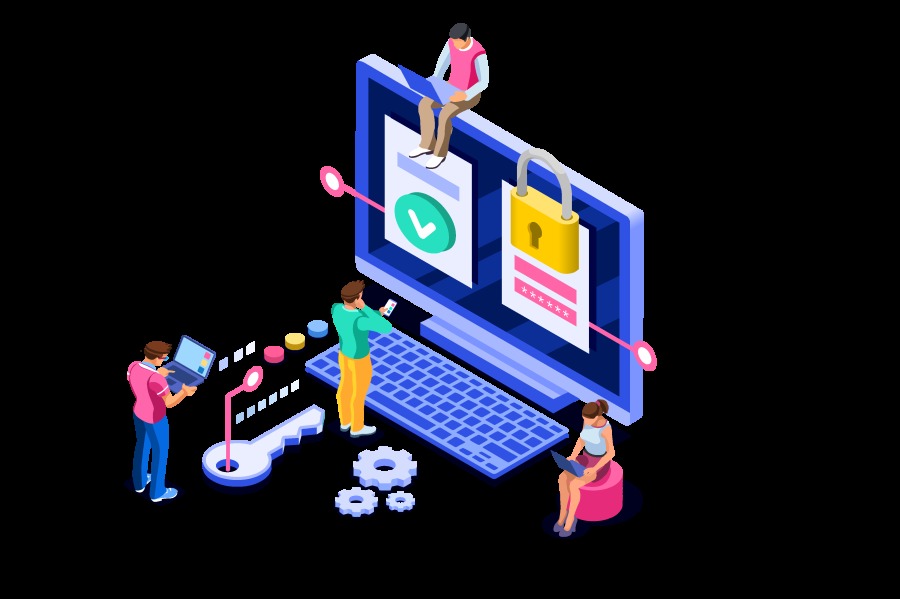5 Customer Experience Success Metrics That Never Disappoint

With multi-channel becoming the norm, omnichannel a priority, digital transformation not a debate but a necessity, artificial intelligence (AI) and machine learning (ML) having more than a foot in the door, customer empathy and personalization reigning supreme — customer experience (CX) has turned into one of the most intriguing phenomenons to have emerged in the last decade, and continues to both confound and fascinate enterprises.
According to Gartner, improving customer experience is one of the top outcomes organizations seek. And that's for good reason, as customer expectations of companies to comprehend their needs has reached whole new heights.
But a question that remains unanswered for many enterprises is how they will measure their CX improvements. Here we look at five customer experience metrics that’ll point you in the right direction, no matter which industry you’re from.
1. Customer Loyalty
Information about the average buying tenure, purchase frequency, use of various buying channels, average order size and repeat ordering can help you gauge the likelihood of a customer staying a customer in the long run.
On the other hand, churn rate points towards the percentage of customers who either don’t make repeat purchases from the same seller or stop using the service(s) of a company after one use or a few, for good.
Although there seems to be no secret sauce for winning customer loyalty except through continually working towards customer gratification, rewards and loyalty programs are one tactic which has stood the test of time as a way to introduce profitability and delight in the buying cycles of loyal customers.
In Feb. 2015, Air Canada was named the top airline in customer loyalty as a result of ceaselessly rewarding its frequent flyers, such as the time it surprised Canadians living in London with free round-trip tickets home for the holidays.
Of course, rewards and loyalty programs come as an add on, only after the basic tenets of customer experience are met: quality, convenience, value, ease of use and consistency.
2. Customer Satisfaction (CSAT)
Broadly speaking, customer satisfaction can be described as the "fulfillment quotient" of a customer after engaging with a brand. It’s measured through various techniques, often carried out in retrospect, including questionnaires or ratings aimed at surveying how satisfied a customer felt after using a service or buying a product.
Questions can focus on factors such as the speed of delivery, query resolution after speaking to a customer rep, the overall experience or service or just the quality of a product or service.
Although every small customer interaction matters, a survey by McKinsey & Company found that instead of measuring specific interactions, gauging satisfaction on the entire customer journey is 30 percent more predictive of the overall customer satisfaction. The same survey identified three areas which build a foundation for consistent customer satisfaction: customer-journey consistency (in an increasingly multichannel, multitouch world), emotional consistency (earning trust) and communication consistency (walking the talk).
3. Brand Advocacy
Your brand advocates are clearly more than your repeat buyers. These are the people with a deep emotional connection with your brand, which prompts them to willingly endorse or recommend your product, service or organization.
Again, it demands great consistency and personalization across all marketing channels and a sprinkle of exclusive attention which the customer receives, that differentiates you in their eyes, as opposed to your competitors. Brand advocates share their thoughts via social media, emails, online chats and forums, ecommerce sites, and through the power of word of mouth (identified by Nielsen as the most credible advertising).
Learning more and more about your customers, not just their needs, but what inspires them, is the lifeblood of advocacy. Being honest, transparent, lending an ear to customers’ needs, adapting to their preferences and quick resolution to their queries can be the starting points. Observing sentiment scores on social media, trust ratings, poll or event participation are a few parameters to judge advocacy among your customer base. Once you identify them, the next thing is to create incentive programs, and empower your advocates to influence their social circles.
4. Customer Effort Score (CES)
Customers love finding the easiest possible route to solve their problems or perform a task. From a larger perspective, it can be anything: from making a service request to finding a product. Making your customers struggle too long to achieve their goals and you’ll see them switch loyalties in no time.
Customer effort score (CES) typically pertains to customer service and is measured following an interaction via review forms or sometimes even by calling the customer. The rating or review is often taken on a scale of 0 (meaning very dissatisfied) to 5/10 (meaning highly satisfied) and is generally accompanied by an optional comments section. However, despite the best efforts to raise the bar of interactions, companies fail to look at customer service resolution from the customer’s perspective.
According to Microsoft's Global Customer Service Report, 95 percent of respondents cited customer service to be a key factor in deciding their loyalty towards a brand.
5. Employee Engagement (EE)
Picture an attendant at Starbucks happily interacting with customers. Now picture that same person serving customers with a blank expression. Employee engagement and customer experience are closely entwined. Think of Southwest Airlines, Zappos, Sainsbury or even Amazon. The contribution the employees of these companies make on their customer experience is nothing short of remarkable.
However, despite the obvious advantages — such as higher productivity, better sales and increased employee retention rate — many companies still don’t take employee engagement very seriously. According to a 2015 Gallup poll, only 32 percent of US workers were engaged in their jobs.
If personalization and care while dealing with customers holds importance for your organization, then there’s a good chance that happy and fulfilled employees will find it easier than discontented employees to deliver on your promises of quality and value.
An Unwavering Commitment to Customer Needs
Forrester findings reaffirm the importance of customer experience, with 72 percent of companies naming improving CX as one of their top priorities. Initiatives around customer experience technology and customer experience management have gained importance, making it an integral part of enterprise business strategy to achieve operational efficiency and profitability.
Great customer experience stems from unwavering commitment to customer needs. And that includes repeatedly providing clear and memorable experiences, unmatched personalization and intuitiveness. It starts from your own people who deliver the service to your customers, but never ends, even after the customer is long gone (sometimes to never return).
Much has been written about the high cost of acquiring new customers as compared with retaining existing ones. Obviously this does not mean you stop looking for new customers, but it's just one more argument why you should be providing your existing ones with the best experience possible.
Make your customer experience best in class, keep measuring what’s most important to them, and turn those metrics into action.
Pimcore guest blog published at CMSWire
"
Artikel von Rahul Singh
Blog ansehen
Red Hat powered leading online publication on Opensource.com acknowledges Pimcore product informatio ...

Digitalization has ignited a new level of expectations amongst today’s customers. And, it’s not goin ...

Retailers have realized that the new currency in retail is convenience, which in turn hails from sea ...
Verwandte Fachleute
Diese Stellen könnten Sie interessieren
-

Fachkraft für die Abfalldeponie
Gefunden in: Adzuna AT C2 - vor 1 Woche
Randstad Linz Asten, ÖsterreichDu bist motiviert und hast keine Scheu vor dem Arbeiten in einem Entorgungsunternehmen? · Dann bist du bei uns genau richtig · Für unseren Kunden in Asten suchen wir zum sofortigen Eintritt · Fachkraft für die Abfalldeponie (m/w/x) · Deine Aufgaben: · Manipulation der angeliefer ...
-
Assistenz im Homeoffice
Gefunden in: Jooble AT C2 - vor 1 Tag
Fachhochschule St. Pölten GmbH Sankt Pölten, Österreich000 Studierenden in neun Themenbereichen ist die Fachhochschule St. Profitieren Sie außerdem von unserem europäischen Netzwerk im Rahmen der Hochschulallianz E3UDRES2 Wir suchen: Assistent*in Campus und Study Center w/m/d h) Ihre Aufgaben Sie unterstützen die Leitung in allen Bel ...
-
Supply Chain Analyst
Gefunden in: Talent AT C2 - vor 5 Tagen
Prewave GmbH Vienna, Österreich GanztagsAbout Prewave · Do you want to be part of one of the fastest-growing AI companies in Supply Chain Risk Management? · At Prewave, we are dedicated to unlocking an unprecedented level of efficiency, transparency and resilience in the supply chain for our customers. We pioneer suppl ...



Kommentare
Jerry Fletcher
vor 5 Jahren #1